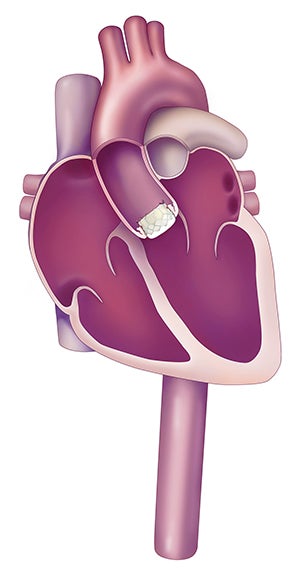Your heart has four chambers each with a valve. Heart valves are paper thin tissue membranes attached to the heart wall that constantly open and close to regulate blood flow.
The aortic valve is located between the left ventricle of the heart and the aorta, the largest artery in the body. The aortic valve normally has three cusps or leaflets, although in 1-2% of the population it is found to congenitally have two leaflets.
There are two conditions that can affect the aortic valve (often co-exist):
- Aortic Insufficiency or Regurgitation in which the aortic valve is incompetent and blood flows passively or leaks backwards into the heart in the wrong direction.
- Aortic stenosis in which, due to build-up of calcium on the valves leaflets, the valve fails to open fully, the valve opening narrows thereby obstructing blood flow out from the heart. Over time, the leaflets become stiff, reducing their ability to fully open and close. When the leaflets don't fully open, your heart must work harder to push blood through the aortic valve to the rest of the body. Eventually, the heart gets weaker, increasing the risk of heart failure because the heart cannot supply enough blood to the body.
Aortic stenosis is a progressive condition, typically classified as mild, moderate, or severe. Many patients eventually progress to severe, which is when medical guidelines (AHA/ACC) recommend valve replacement.
TAVR is a less invasive procedure which allows a new valve to be inserted within the native, diseased aortic valve.
How is TAVR Performed?
The TAVR procedure can be performed using one of many approaches, the most common being the transfemoral approach (through a small incision in the leg). For patients without adequate vascular access, alternative access approaches are available. Only a Heart Team can decide which approach is best, based on the patient’s medical condition and other factors.

In preparation for the patient’s procedure, the patient may be placed under anesthesia. The doctor will make an incision in the leg, and will insert a short hollow tube called a sheath. This will allow the doctor to put various devices through the sheath to access the patient’s heart. The heart valve is placed on the delivery system, and compressed onto a balloon to make it small enough to fit through the sheath. Once the delivery system reaches the patient’s diseased valve, the balloon will be inflated with fluid, expanding the new valve into place. The new valve pushes the leaflets of the patient’s diseased valve aside, and the frame of the new valve uses the diseased valve’s leaflets to secure itself in place. The balloon is then deflated and removed. The patient’s doctor will ensure the new valve is working properly before closing up the incision.
The TAVR procedure may involve general anesthesia and is associated with specific contraindications as well as adverse effects, including risks of death, stroke, major vascular complications and major bleeding, and other life-threatening and serious events.
Who is Eligible for TAVR?
People with symptomatic severe aortic stenosis who are intermediate or greater risk for open-heart surgery as determined by a specialized heart team. Today, TAVR is not approved for everyone.
To learn more about the TAVR procedure in Lafayette, call 337-988-1585 or 1-800-582-2435. You can also email Cindy.langley@cardio.com.


